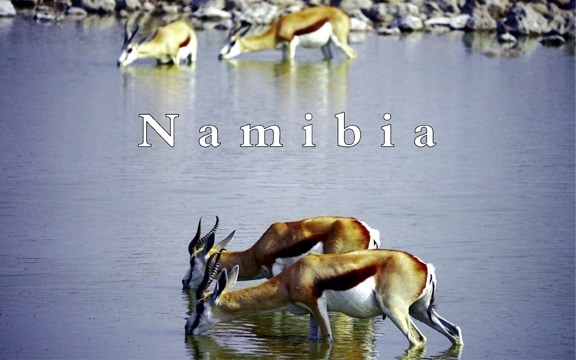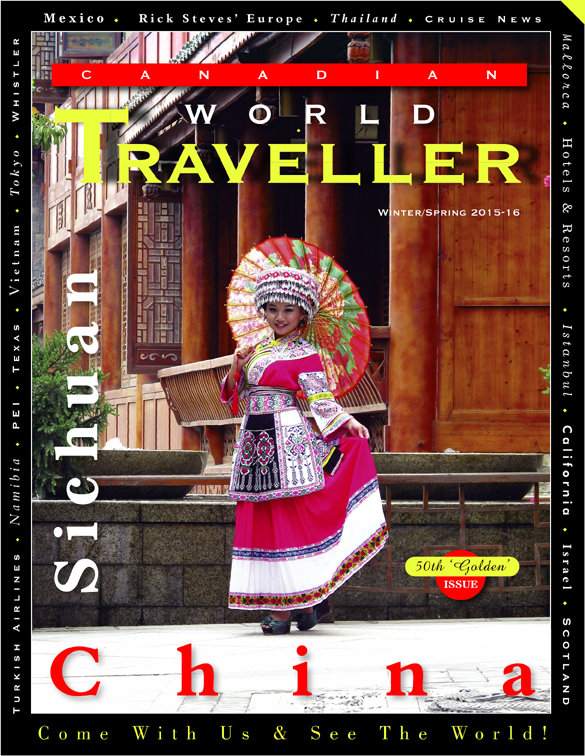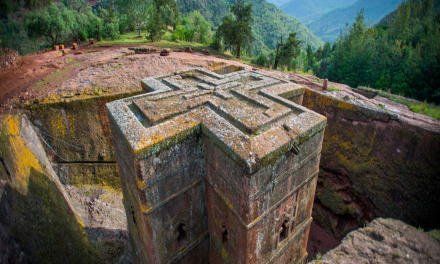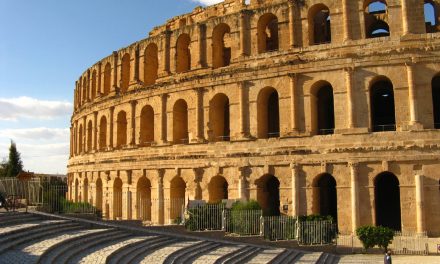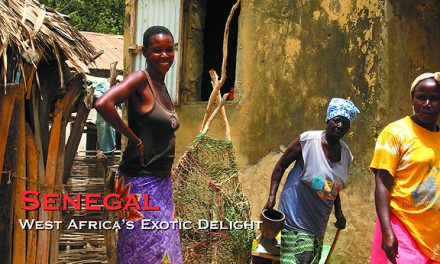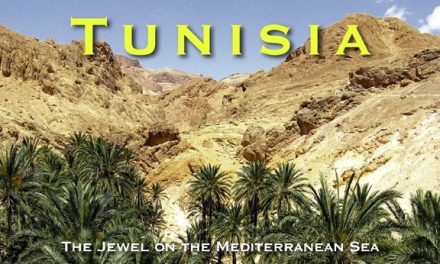Namibia
Predator or prey
Article & Photography by Johanna Read, TravelEater.net

“Watch out, eland!” I say it quietly. I don’t want to scare the already skittish eland any further.
Though the biggest antelopes of Africa — think moose-sized, with a square-ish cow-shaped body — these giant eland sensed there were lions nearby. They aren’t wrong.
Our eyes are glued as they cautiously sip from the waterhole while we (considerably less cautiously) sip our sundowners. As the sun sinks, the nervous herd gathers closer together, while we observe from atop the wide deck of the lodge at the Ongava Game Reserve. We’re in Namibia, in the southwest corner of Africa.
At the base of the viewing deck is steady traffic of both predator and prey. They come in turns, the lions languid, the rhinos nonchalant, and every antelope very cautious. They are all thirsty in the dry Namibian winter.
While refreshing my gin and tonic (an extra precaution against malaria, right?), the bartender tells me that the lions are hungry as they haven’t had a kill in several days. I feel a little sorry for them, but I’m on Team Eland.
Throughout our stay at Ongava, we alternate between watching wildlife from the Land Rover and the viewing deck. Earlier in our trip we’d been able to watch wildlife from the ground too. We tracked cheetah on foot at Okonjima’s Africat Foundation and enjoyed 20 silent minutes gazing at their surprisingly long bodies while sitting in the sand just a few metres away.
This is Namibia, where safari opportunities abound.
It is hard to decide which type of safari I prefer. While you don’t see as much game on a walking safari, being out in a game reserve without the protection of a vehicle or up on a viewing deck certainly gets your adrenaline up, especially if you’re tracking cheetah.
Unique in Namibia is the opportunity to do another walking safari of sorts. Visitors slowly climb the shifting sands of ochre dunes to watch the sunrise over the Namib Desert. After a hot breakfast under a tree, they walk into the desert across dry salt pans to see 900-year-old petrified camel thorn trees. The views are spectacular and a photographer’s dream.
On a driving safari, you can get very close to the animals. Sometimes they’re aware of your presence, and sometimes they don’t seem to notice you at all. One afternoon we’re surrounded by zebra (dizzying!). Later that evening, lazy lions lie all over the road blocking our only way home (ideal, if only the light hadn’t been too dim to get a sharp photograph). Elsewhere we see giraffe, elephant, warthog and even a rare Cape fox, curled up for warmth just as the sun rises.
But to see the most authentic animal behaviours, watch the waterholes.
At every meal on Ongava’s viewing deck, I keep a sharp eye on the waterhole. I enjoyed my Namibian breakfasts, lunches and dinners (including, a little guiltily, some eland meat), but I see the lions grow gaunter every day.
When it’s time to leave, I take one last look at the waterhole. I’ve switched allegiance.
”Go Team Lion!”
Johanna Read is a Vancouver-based freelance writer and photographer specializing in travel and food. Follow Johanna on:
Instagram @TravelEaterJohanna
Twitter @TravelEater.
www.TravelEater.net
Click on cover to view published article

